On today's itinerary we tackled the Ring of Kerry, “Ireland's most popular scenic drive. It takes in panoramas of rugged coastline, tall mountains, and pristine lakes.” (Ireland Day by Day, p264) You want to know what we saw? Fog.
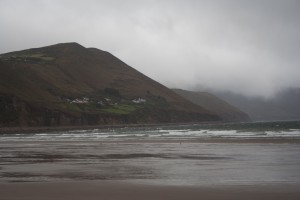
We did manage to take in some of the sites of Kerry, including the Kerry Cliffs; not as popular as the Cliffs of Mohr (which we hit tomorrow) but breath-taking all the same.
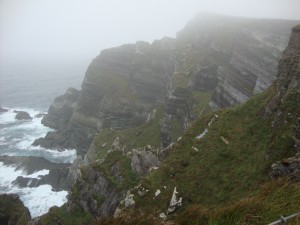

After fighting the winds and getting back to the car I thought it was about time for me to take the wheel. Now, obviously I am sitting here typing this so I'm here and I doubt jail would allow me time to blog, so you can guess everyone came out of the experience alive and well. Even the sheep.

I have to say, other than the bridge incident I did pretty well. What bridge incident, you ask? I'll save that story for another time. 😉
On our way around the ring we decided that since we couldn't see much of the coast we were going to go find some more stone circles. I know I didn't get a chance to talk about the stone circle, An Drum Beag, we stopped at yesterday because I was falling asleep in my Guinness, so I'll do that now; especially since we hit two more today.
I don't know if it's because the books that I've read about people traveling through the stones to different times, or just the mystery that surrounds them, but they have captured my imagination like no other. I felt as if I had to walk around the circle first before entering through the stones, then I had to touch the axial stone (alter stone), or burial stone, if there was one, hoping that I would feel something.
To my credit, or imagination, I swear I saw steam wisp off of the top of the burial stone at Kenmare's stone circle. However it was misting a bit and my eyes could have been playing tricks on me. Silly eyes. 😉
But it was still a thrill to think that for just a moment there was real magic there.
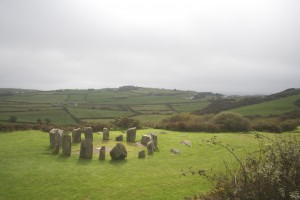
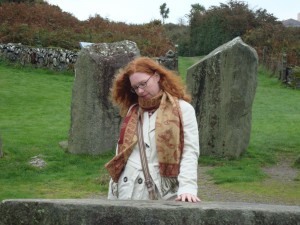
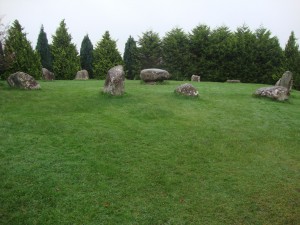
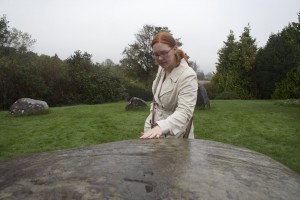

The last place we stopped at, Bonane Heritage Park, also had a stone circle, along with a ring fort, Fulacht Fiadh and famine ruins. The Fulacht Fiadh, or cooking site, is located just outside the circle just like the one at An Drum Beag. The ring fort is really cool; well, today its just a big circle of spaced out stones surrounded by what used to be a moat.
The famine ruins that are found just outside the ring fort have an interesting story. It seems it used to be considered bad luck to cultivate the land in the ancient ring fort or stone circles. However, during the famine, families would do anything to feed their families and they had to believe that using the “virgin soil” in the ring fort would help grow their crop. You can still see where the potato beds were in the fort.
Unfortunately, by excavating the nearby ruins, we learned that this train of thought did not help the family there.
I find it difficult to match up the timelines of America and Ireland, especially with the houses. The famine took place in the 1840's and Ireland's countryside is littered with ruins of stone homes that were abandoned during the famine. I can't believe how many I see while we're driving.
Our house was built in the 1880's, and granted 40 years can yield a lot of advances, but I think of our historic homes and they're not made out of stones. It's amazing to see the timeline of the two countries and how they line up. It's interesting and heartbreaking to think of the stark differences of living conditions.
There's just one more funny story I need to tell you before I go and talk to my girls. Eric and I decided that if you want to make a lot of money in Ireland, buy a piece of land, line up some rocks that can be seen from the road and ask for a “donation” to see your stone circle. Why do I think it would work?
Because tourists are idiots! Case in point, Eric and I were driving the mountainside looking for a stone circle we were told was in the area. I get all excited when I see a couple of big rocks lined up together next to what appears to be a stone wall. We park the car, walk up a hill and find ourselves at…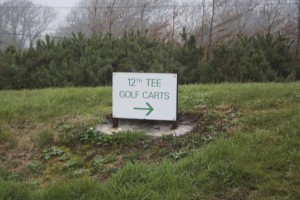
That's right, we found ourselves at the 12th hole at some golf course. Tourists, sheesh. They think every pile of rocks is some sort of ruin. 😉